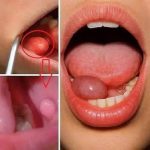Understanding the “Death Rattle” at the End of Life
When someone approaches the final stages of life, their body undergoes changes that may begin months before passing. In the last day or so, loved ones may notice a common and often unsettling sound — known as the “death rattle.” While the sound can be distressing to hear, it is a natural part of the dying process and does not cause pain for the person experiencing it.
🔍 What Is the “Death Rattle”?
The “death rattle” occurs when a person loses the ability to swallow, allowing saliva and secretions to collect in the back of the throat. As air moves through, it produces a crackling, wet, or gurgling sound.
Hospice nurse Julie, an expert in end-of-life care, explains:
“This is just a collection of a small bit of saliva in the back of the throat that just sounds really bad.”
She also notes that fever is common during this stage:
“We lose the ability to control the core temperature, so our temperature will fluctuate at the end of life. Again, it’s all very normal and part of the death and dying process if you are dying naturally at home.”
🗣️ What Does It Sound Like?
Descriptions vary:
-
A crackling or gurgling noise with each breath
-
A faint groaning or snoring sound
-
A wet or rattling breath that may grow louder over time
Although the sound can be difficult for loved ones, it’s important to remember: the person is not experiencing pain or distress.
Research suggests that the average time from the onset of the death rattle to passing is around 25 hours, though this can vary.
💡 How to Ease the Noise
While the sound cannot usually be eliminated, there are ways to reduce its intensity and bring comfort to loved ones:
-
Gently reposition the person onto their side to help secretions drain
-
Raise the head slightly to promote easier breathing
-
Use damp swabs to keep the mouth moist
-
Limit fluid intake to reduce buildup
-
Consider gentle suction if recommended by medical staff
-
Medications may also be prescribed to help dry excess secretions
These steps are not about prolonging life but about easing the environment for both the patient and their family.
🌿 A Natural Part of Dying
The “death rattle” can be difficult to hear, but it is a natural sign that the body is nearing its final transition. It does not mean suffering. Understanding this phenomenon can help families feel less alarmed and more able to focus on what matters most in these moments: presence, love, and peace.
By being informed and supported, families can accompany their loved one with compassion and calm, trusting that the process is part of the body’s natural closure.


